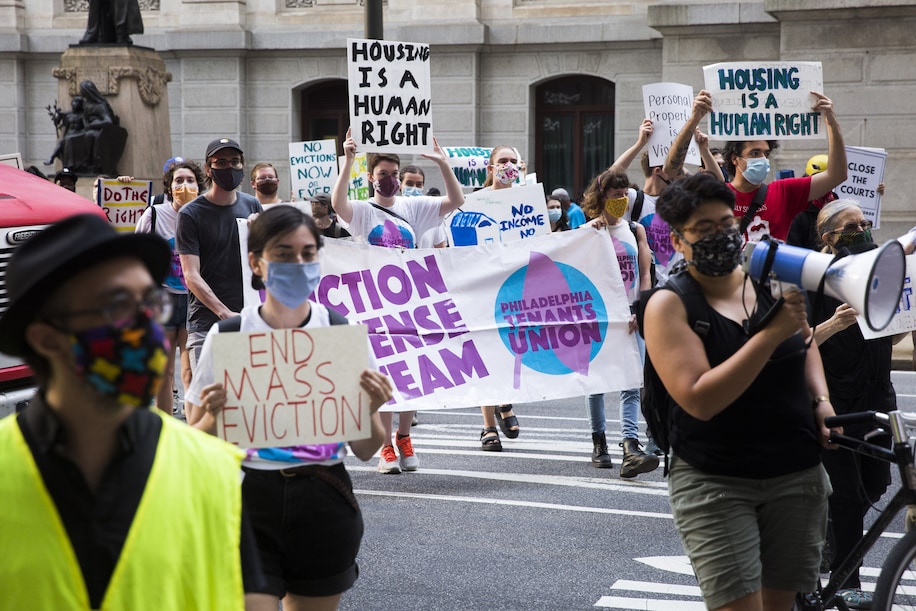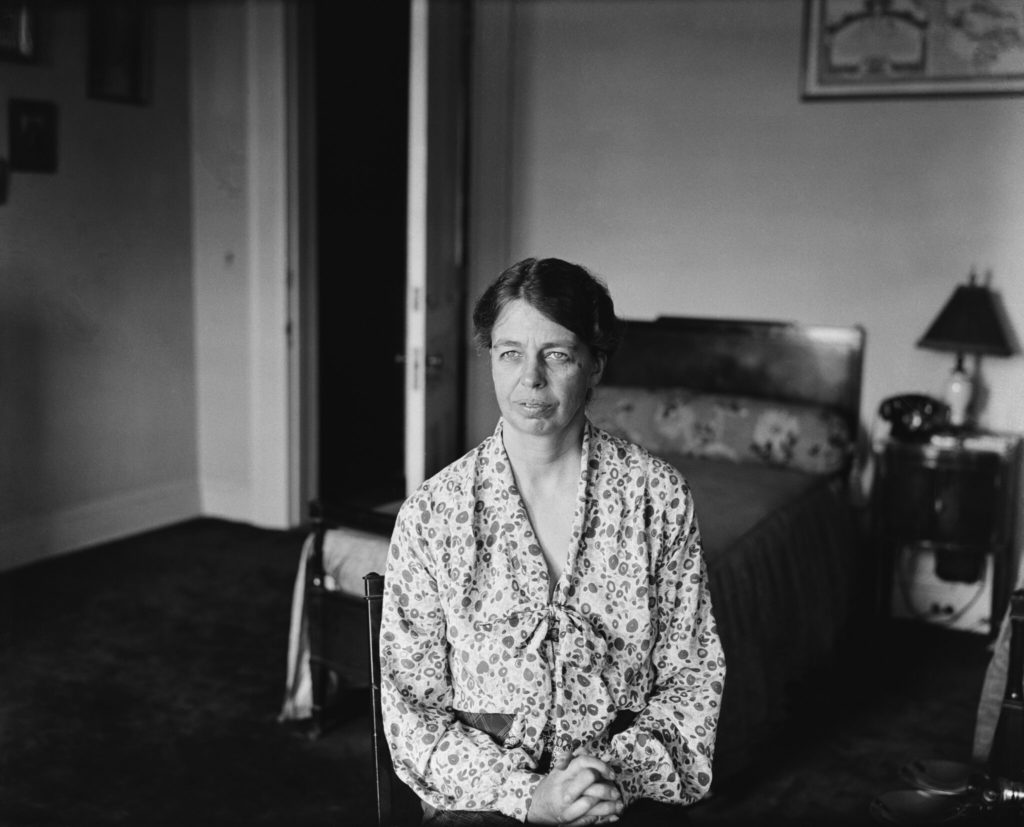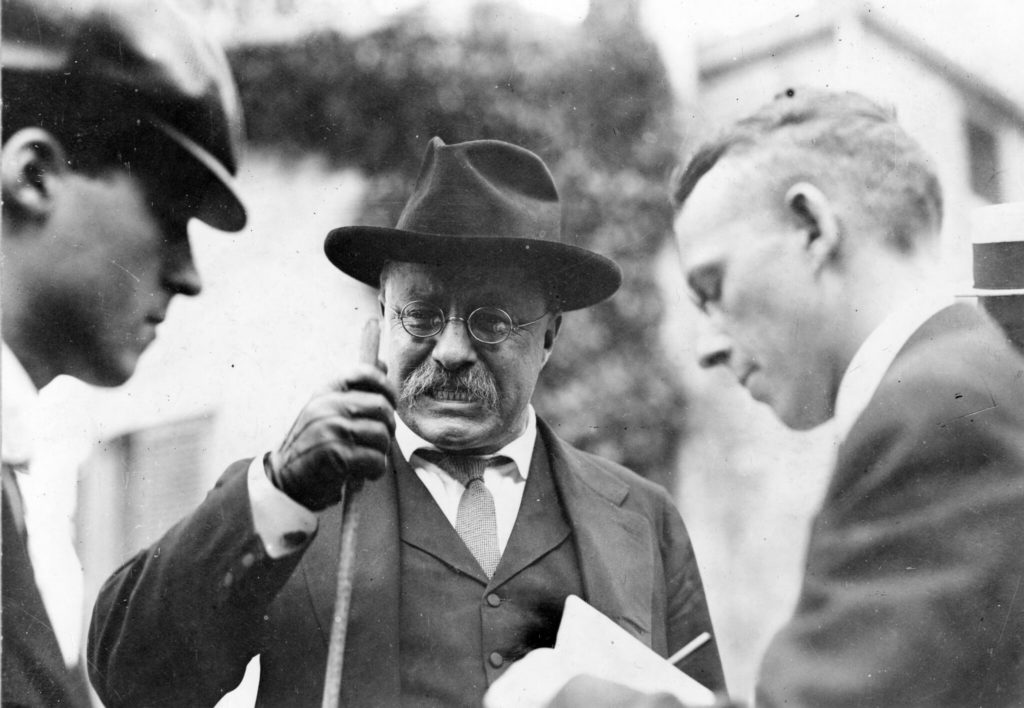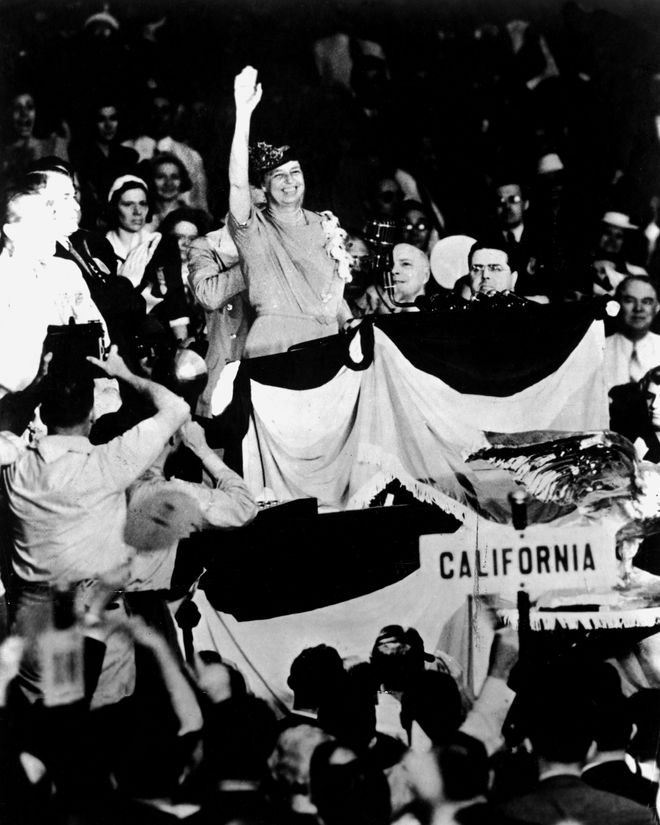Eleanor Roosevelt, First Among First Ladies
A Review of:
ELEANOR
By David Michaelis
Eleanor Roosevelt was the most important first lady in American history. Or at least until Hillary Clinton. But when Hillary was in the White House she claimed she was communing with Eleanor’s spirit, looking for inspiration.
Case closed.
Eleanor came from an important family — Uncle Theodore, after all, was president. But her upbringing was so grim that it’s a wonder she emerged functional, let alone one of our nation’s great humanitarians. Her haughty mother humiliated her by calling her “Granny.” Her alcoholic father was the beloved parent, but hardly someone you could count on in a pinch. Once she reached adolescence, Eleanor was installing triple locks on her bedroom door “to keep my uncles out.”
She compensated for feelings of unattractiveness and rejection with good works. As she grew to adulthood, Eleanor threw herself into the settlement house movement to serve the poor. Her boyfriend Franklin was impressed — and a little shocked — by her activities. He announced after she took him on a tour of tenement life on the Lower East Side: “My God, I didn’t know people lived like that.”
Eleanor and Franklin Roosevelt were distant cousins in a family that would probably not have chosen Franklin as most likely to succeed. The joke was that “F.D.R.” stood for “Feather Duster Roosevelt.” But he had grand ambitions, and David Michaelis, the author of biographies of Charles Schulz and N. C. Wyeth, suggests he “was wise enough to know (as only a boy named ‘Feather Duster’ knows) that if his will to power was to be taken seriously, he needed…”
Read more at:
https://www.nytimes.com/2020/10/06/books/review/eleanor-david-michaelis.html
The Depression-era lessons that can solve today’s evictions crisis

Demonstrators march to protest evictions in Philadelphia on Thursday. (Rachel Wisniewksi/Bloomberg News)
By
During the Great Depression, social scientists Sophonisba Breckinridge and Edith Abbott launched a study of the Chicago Renters’ Court. Established to hear cases in which tenants were subject to immediate eviction for nonpayment of rent, the court was busy during the Depression; from 1931 to 1933, total evictions in the city doubled.
Their research showed that…
Read more at:
How John F. Kennedy and Eleanor Roosevelt went from rivals to allies
Finding common ground is possible if a leader works at it.
The Dallas Morning News is publishing a multipart series on important issues for voters to consider as they choose a president this year. This is the third installment of our What’s at Stake series, and it focuses on presidential leadership. Find the full series here.
Our country faces wide gulfs today along partisan, ideological, geographical and racial boundaries. Recent gaps between Republicans and Democrats on approval ratings for President Donald Trump expose the largest schism in polling history: nearly a 90% difference between partisan views of his presidency. Sometimes it seems as if red and blue America will never turn purple, unless it results from holding our collective breath over what new disasters — natural, viral, economic or civic — could befall our beloved country.
In despair, we might believe that the present is the worst of times, in contrast to some bygone era of good feelings. The United States did experience one of those golden decades in the aftermath of the War of 1812, when conflict between our first two parties ended with the Federalists’ demise and the Democratic-Republicans’ ascendancy. Such a Pax Americana is rare, however, and our politics have most often been marked by everything from cataclysmic division over first principles to less seismic intraparty policy squabbles.
At the recent virtual Democratic National Convention, John F. Kennedy’s daughter, Caroline, and his grandson, Jack Schlossberg, offered a tribute to the former president. They cited the 60th anniversary of his New Frontier acceptance speech at the 1960 convention.
“The New Frontier of which I speak is not a set of promises,” the young Massachusetts senator declared. “It is a set of…”
Read more at:
The Never-Ending War Between the White House and the Press
A Review of:
THE PRESIDENTS VS. THE PRESS
The Endless Battle Between the White House and the Media — From the Founding Fathers to Fake News
By Harold Holzer
The next time President Trump chafes your free-speech sensibilities by yanking the White House credentials of a reporter who questioned him hard, insulting journalists at a news conference, tweeting about “fake news” being the enemy of the people or threatening to retaliate against one of the media outlets whose reporting has offended him, calm yourself by opening Harold Holzer’s “The Presidents vs. the Press” to almost any page. For all of Trump’s transgressions against the press — and they are many — Holzer’s book offers evidence that he’s not the greatest enemy of the First Amendment to have occupied the White House. He might not even rank in the top five.
Trump would definitely have to bow to both President John Adams, who signed into law sedition statutes used to prosecute journalists, and President Abraham Lincoln, who imprisoned scores of editors during the Civil War, purged news stories from the telegraph, banned some newspapers from the mails and even confiscated presses. “Altogether, nearly 200 papers would face federally initiated subjugation during the Civil War,” Holzer writes. President Theodore Roosevelt, who actually enjoyed reporters, punished the press with a lighter touch. He established the “Ananias Club” — a symbolic place of exile — for reporters who displeased him, and he filed a libel suit against Joseph Pulitzer’s New York World. President Woodrow Wilson reprised some of Lincoln’s worst tendencies during World War I, imposing censorship of the press and pushing propaganda. And when it comes to President Richard Nixon, a man who once told his national security adviser, Henry Kissinger, “The press is…”
Read more at:
https://www.nytimes.com/2020/08/25/books/review/the-presidents-vs-the-press-harold-holzer.html
When Did First Ladies Start Speaking at National Party Conventions?
By
As Melania Trump prepares for her big featured speech on the second night of the Republican National Convention, it’s worth looking at how this apparent institution of First Lady addresses to national party conventions got started. It would be easy to assume that it’s merely a reflection of the gradual arc toward equality of women in politics as in other walks of life, and that’s partially true, though no First Lady has ever wielded the actual power Edith Wilson possessed during the last two years of her husband Woodrow’s stroke-afflicted presidency, beginning before women even obtained the vote.
But the first U.S. First Lady to speak at a party convention, in 1940, was very much a political power in her own right, and de facto co-leader (along with soon-to-be Vice-President Henry Wallace) of the progressive wing of the Democratic Party: Eleanor Roosevelt. She also spoke on behalf of her husband, who did not appear at that convention out of concerns over a too aggressive assault on the two-term tradition FDR was breaking that year.
After that pioneering speech by the longest-serving FLOTUS ever, no First Lady spoke at a national party convention for 32 years: not Bess Truman, not Mamie Eisenhower, not Jackie Kennedy, not Lady Bird Johnson. The first Republican First Lady to address a convention was Pat Nixon in 1972, the year when her husband orchestrated the most tightly controlled party convention in history to that date. Mrs. Nixon, largely remembered as an innocent victim of her husband’s many sins (among them saying during a debate with JFK, “America cannot stand pat”), was actually a veteran campaigner and the most traveled First Lady before Hillary Clinton.
Betty Ford (probably kept away from the 1976 podium thanks to her feminist views) and Rosalynn Carter managed to avoid convention speeches, but the mold was finally broken by…
Read more at:
https://nymag.com/intelligencer/article/when-first-ladies-start-speaking-conventions.html



